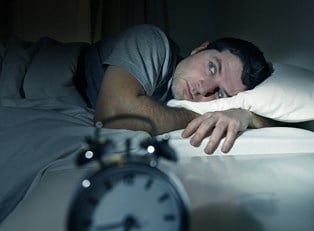Night terrors, or sleep terrors, are a parasomnia -- an odd behavior that occurs while you are sleeping. In the case of night terrors, this abnormal behavior is a short period characterized by extreme feelings of fear, often combined with screaming, crying, or flailing unrelated to dreams. Although relatively rare, night terrors occur in young children and even more rarely continue into adulthood. Here’s a look at understanding night terrors.
Night Terrors vs. Nightmares: What's the Difference?
People with true night terrors are often frustrated by others misunderstanding their affliction. When your child begins having night terrors and wakes up frightened and screaming, it is easy to assume they were simply in the midst of a nightmare. However, there is a distinct difference. Nightmares, of course, are dreams gone horribly wrong. They occur, like all dreams, during the REM (rapid eye movement) stage of sleep -- during REM sleep, the body is effectively paralyzed, although the brain is extremely active. You may remember nightmares after waking up. Night terrors, however, occur during non-REM sleep, during the third stage, or in the transition between its third and fourth stages (called the slow-wave sleep phase) before the body is rendered inert. Additionally, you likely will not wake up from night terrors -- or remember that they occurred.
Symptoms and Complications of Night Terrors
Sleep terrors may be evident by a number of odd mannerisms. While still in the midst of non-REM sleep, the person may sit up or begin thrashing or flailing around. Adults may exhibit violent behavior more often than children. This may be accompanied by screaming, crying, or yelling. Unconscious processes of the body may kick in, increasing the heart rate and causing perspiration or heavy breathing. Additionally, they may stare wide-eyed at nothing, while being exceedingly difficult to wake. If they do wake up, it is unlikely they will recall any of it in the morning and will likely be very confused and disoriented during the event. Sleep walking is also frequently associated with night terrors, so the person may begin walking around -- possibly even seemingly with purpose. These symptoms generally last for less than 10 minutes, and begin about an hour and half after falling asleep.
Night terrors, since they are largely forgotten before waking up, may not cause any real problems. However, if severe or frequent enough, they can cause a disruption of the household and leave the individual experiencing them, as well as those within earshot, more tired than normal during the day. Additionally, it can be embarrassing during slumber parties for children (as well as frightening for hosts!). If the physical aspects are extreme enough, there may be the potential for injury to yourself or others.
Causes of Night Terrors
There are a variety of issues that can contribute to night terrors, both psychologically and physically. Sleep, unsurprisingly, can play a large role. Being extremely tired, particularly because of lost sleep, can make sleep terrors more likely, potentially because of falling into a deeper sleep more easily. Sleep-disordered breathing, such as sleep apnea, can also impact the presence of night terrors. Additionally, children may be more likely to have night terrors when they have a fever.
Other disorders or injuries that can impact sleep terrors include head injuries, migraines, encephalitis, hyperthyroidism, and restless leg syndrome. Extreme stress, a very full bladder, unfamiliar environments, too much light or noise during sleep, and even some medications (particularly those that affect the brain) can all impact sleep and sleep terrors. However, there is no exact and specific cause that has been identified.
Treatments for Night Terrors
In many cases, particularly those during childhood, treatment is largely unnecessary. Less than 15% of children are estimated to suffer from night terrors, and only a small percentage of those continue having night terrors in adulthood. In most cases, it is simply outgrown. However, if sleep terrors become very frequent, continue on past about age 12, become dangerous, seem to have a pattern, begin to disrupt the entire household’s sleep, or make the person suffering from night terrors afraid to sleep, it might be a good idea to see a physician or psychologist.
Treatment might involve dealing with the underlying issue: getting treatment for sleep apnea, attempting to make the house quieter during sleeping hours, or dealing with any overwhelming stress or other anxiety-related issues that might be occurring. Ensuring sufficient sleep may also help. Medication is almost never used to help children with night terrors, but in adulthood benzodiazepines may be an effective last attempt at getting rid of sleep terrors.


